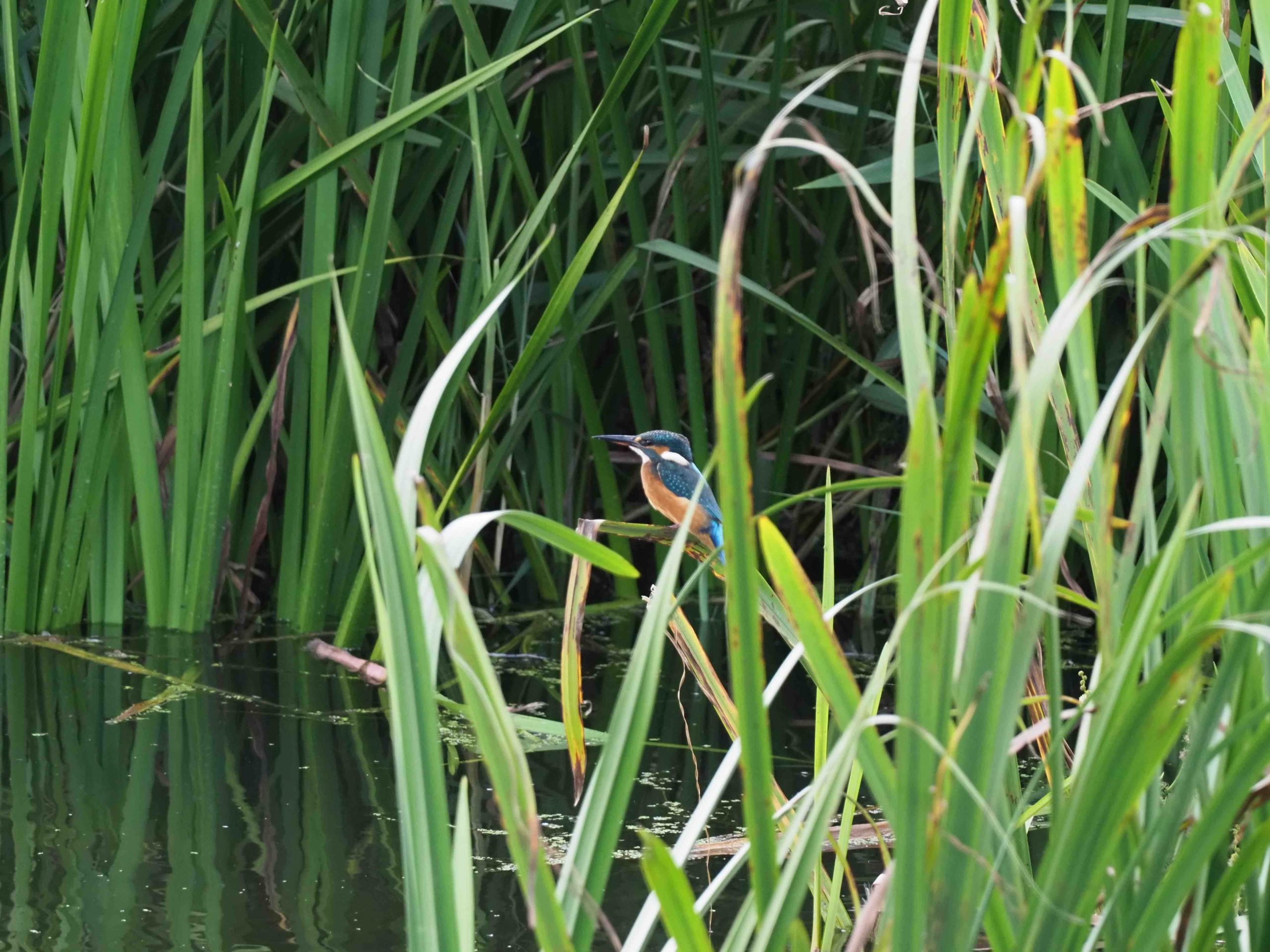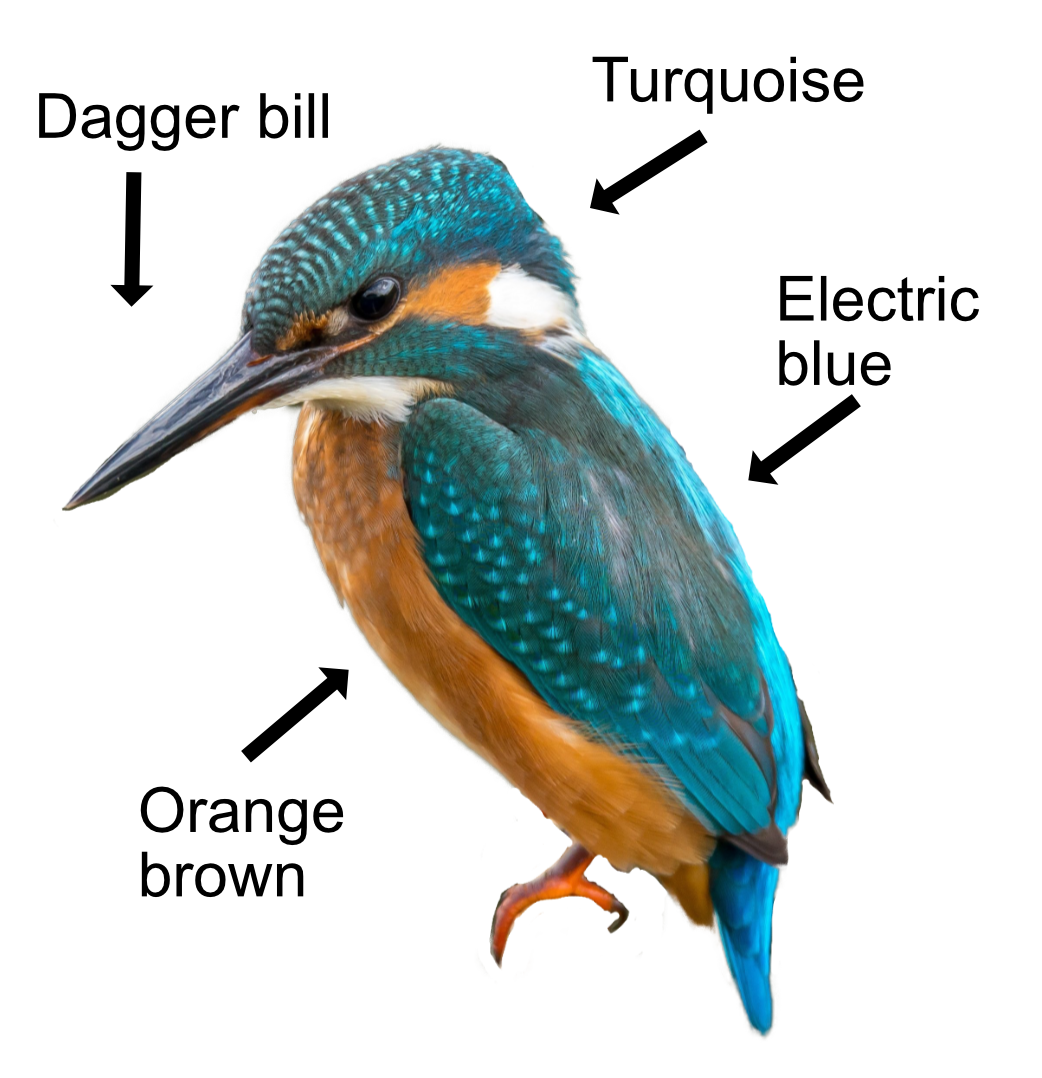
The problem with Kingfishers is they are always shown big in books when in fact they are tiny and very hard to spot! You often just catch a glimpse of the gorgeous electric blue flash as they race past like a speeding bullet. Blink and you have missed them. When perched, a lot of the blue is hidden and they blend in as a small reddish brown bird against a brown background. A bit like a dead leaf. They are best found along the edge of fresh water like slow-moving rivers, ponds and lakes especially where there are deep banks to make nest tunnels. Yes, they tunnel!
The Kingfisher is the size of a sparrow (which is not very big) with a large head and long dagger like bill. They have a turquoise crown, back, and wings, brown-orange underparts, and an electric blue rump (the vivid blueness is because of the feathers not pigmentation). There are white patches behind the ears and on the neck and their legs are orange. The male and female are identical except that the male has an all black bill while the female has a bit of lipstick orange on the lower edge so the youngsters can tell them apart. Their flight is low and bullet-straight over water. The two best ways to spot a Kingfisher are either from the sudden 'plop' as they dive into the water, or from their call. During flight and take-off they give a short whistled "svee" with short "svit" notes a bit like short blasts on a referee's whistle.

Kingfishers hunt by plunge diving from branches or reeds overhanging a river or pool, capturing small fish like sticklebacks, bullheads, loaches, and minnows. They will also eat aquatic insects. They often beat the fish against a branch before swallowing it head first. A few times each day, they sick up a small greyish pellet containing fish bones and other indigestible remains. Kingfishers have to eat about 60% of their bodyweight each day, which makes them highly territorial - controlling up to a mile of riverbank. If another kingfisher enters the territory, both birds display from perches, and fights may occur. Each bird will try to grab the other's beak and hold it underwater until it gives in. Kingfishers moult gradually over the summer so can always fly and hunt for food.
During February and March, the Kingfisher looks for a mate. The courtship display involves high-speed chases up and down the river and lots of mutual feeding. The happy couple then build a nest chamber at the end of a tunnel in a suitable riverbank, usually not far above the waterline. They don't lay the first eggs until April as it can take a while to dig a tunnel. The 6-7 eggs are incubated by both parents and hatch after 19 days. Both parents then feed the chicks and work to control the large breeding territory they need to find enough food. With fish remains, chick poo, and being underground, the nest becomes very smelly! The youngsters can fly after 27 days and are quickly independent as they want to get as far away from the stinky nest as possible. The young Kingfishers will disperse to their own territories, but these are generally not too far away. Mum and dad will often have a second brood.
The Kingfisher is a resident, short distance migrant with some moving down stream to coastal estuaries in winter where there is less chance of the water freezing. Their numbers can crash in harsh winters when they can't get through the frozen water to feed. The Kingfisher, depending on small fish, is very susceptible to water pollution, in fact they are good indicators of the health of a river. The highest densities of breeding birds are found in habitats where there is clear, clean water. The nasty Victorians killed lots of Kingfishers as they liked them stuffed in display cases and to put the blue feathers in their hats.
Their Latin name is 'alcedo atthis' where 'alcedo' means 'kingfisher' derived from the Greek 'halcyon'. 'Atthis' was a beautiful young woman from Lesbos a long, long time ago. I wonder if she had blue hair?